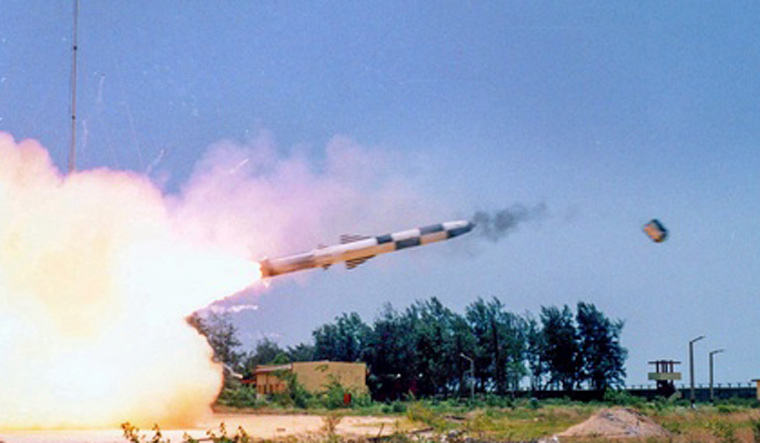The DRDO successfully tested an 'extended range' variant of the BrahMos supersonic cruise missile, news agency ANI reported on Thursday.
ANI reported the extended-range variant was fitted with an indigenously built rocket booster. The BrahMos was developed as a joint venture by India and Russia and was first tested in 2001. The BrahMos was initially developed to have a range of 290km and maximum speed of 2.8 Mach, that is 2.8 times the speed of sound. The BrahMos is capable of striking both ships and targets on land.
While the BrahMos was inducted by the Indian Navy and Army, DRDO had also launched work on an extended-range variant. An extended-range variant would not only enable Indian Navy ships and Army launchers to hit targets at longer distances, it would also enable them to stay at 'stand-off' distances to reduce possibility of enemy attack. The BrahMos missile is already deployed with Army units along the border with China.
In March 2017, the extended-range variant of the BrahMos was test-fired at the DRDO's test facility in Balasore, Odisha, for the first time. At the time, the DRDO had said the 'BrahMos-ER’ would empower the armed forces to "knock down enemy targets far beyond 400km”.
In July 2019, BrahMos Aerospace CEO S.K. Mishra told Doordarshan a version of the BrahMos with a range of up to 500km was ready. He had noted it was possible to increase the range of the BrahMos as India was now a signatory to the Missile Technology Control Regime.
Mishra had told Doordarshan then, "We can take on any ship at sea up to 300 to 400 km (far) and after some time, may be longer; we can take on land targets up to hundreds of km and with the test that we have conducted some time back (from Sukhoi 30), ranges up to thousands of km…”
The BrahMos is a derivative of a Russian missile, the Oniks. In September last year, Russia's TASS news agency reported the country was developing a variant of the Oniks with a range of 800km.





